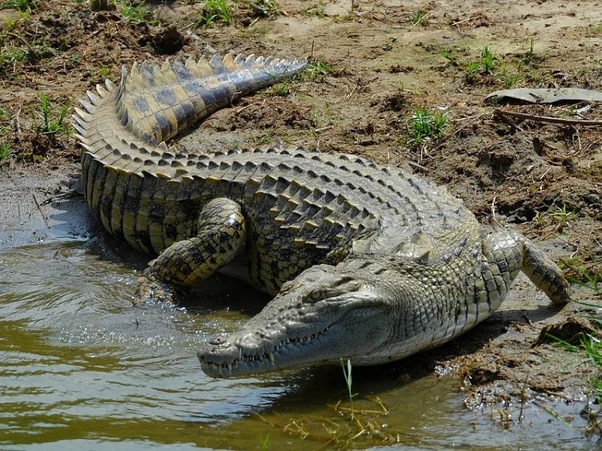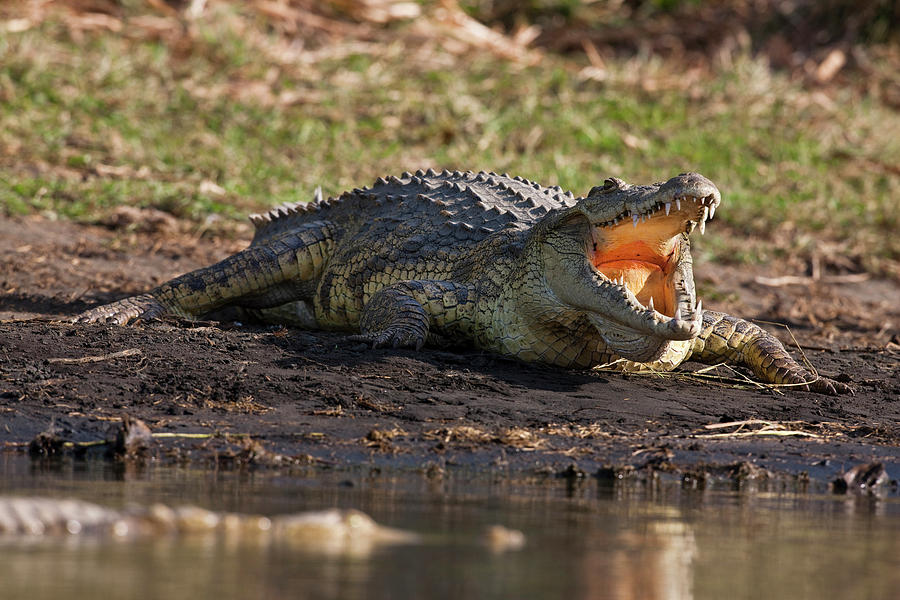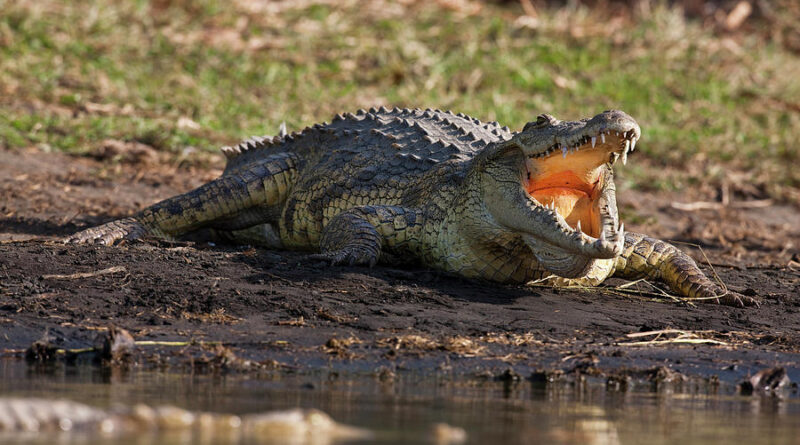Nile Crocodile Preferred Environments
Nile Crocodile Preferred Environments The Nile crocodile (Crocodylus niloticus), a species both feared and revered, is one of the largest and most widely distributed crocodiles in Africa. Its presence spans diverse landscapes, from the deep waters of the Nile River to the seasonal floodplains of southern Africa. Understanding the preferred environments of this iconic reptile is crucial not only for its conservation but also for minimizing human-wildlife conflicts. This article delves into the habitats, environmental factors, and conservation challenges associated with the Nile crocodile’s preferred environments.
Nile crocodiles are apex predators and play a significant role in maintaining the ecological balance within their habitats. They are highly adaptable and can thrive in a variety of aquatic environments. However, their survival is intricately linked to specific habitat conditions. As human activities continue to alter natural landscapes, it is more important than ever to understand the environments that these ancient creatures prefer. This knowledge will help inform effective conservation strategies and ensure the coexistence of humans and crocodiles in shared habitats.
Habitat Preferences
Nile crocodiles are found in a range of aquatic environments, including rivers, lakes, estuaries, and wetlands. Each habitat type provides different resources and challenges, and crocodiles must be adaptable to thrive.
Rivers and Lakes

Nile crocodiles are commonly associated with large rivers and lakes. These freshwater habitats provide an abundance of food and stable water sources, essential for their survival. Crocodiles are often found in slow-moving rivers with deep channels and sheltered areas, which are ideal for ambushing prey. Some of the major river systems inhabited by Nile crocodiles include the Nile River in northeastern Africa, the Zambezi River in southern Africa, and the Congo River in central Africa. Large lakes, such as Lake Victoria and Lake Tanganyika, are also prime habitats, supporting sizable populations of Nile crocodiles.
Estuaries and Coastal Areas
Although primarily freshwater dwellers, Nile crocodiles can tolerate brackish and saline waters. This adaptability allows them to inhabit estuaries and coastal regions where rivers meet the sea. In these environments, crocodiles must cope with varying salinity levels, which they manage by excreting excess salt through specialized glands. The ability to exploit these habitats expands their range and offers access to different prey species.
Swamps and Floodplains
Swamps, marshes, and floodplains are crucial habitats for Nile crocodiles, particularly during the breeding season. These areas provide abundant food and secluded nesting sites, away from potential predators and human disturbance. The availability of such habitats is often seasonal, influenced by the annual flood cycles of rivers. In regions like the Okavango Delta, the seasonal flooding creates dynamic wetland habitats that attract crocodiles during the wet season.
Environmental Factors Influencing Habitat Selection
Several environmental factors determine the suitability of habitats for Nile crocodiles. Understanding these factors is key to predicting where crocodiles are likely to be found and how they respond to changing environmental conditions.
Water Availability
Nile crocodiles are highly dependent on stable water sources. During periods of drought, crocodiles may move to deeper water bodies or enter a state of estivation, burying themselves in mud to conserve moisture. Conversely, during the rainy season, crocodiles often expand their range into newly flooded areas, taking advantage of temporary wetlands and increased prey availability.
Prey Abundance

The presence of prey species is a primary factor influencing habitat selection. Crocodiles are opportunistic feeders and will inhabit areas where prey density is high. Fish are a staple in their diet, but they also prey on birds, mammals, and occasionally other reptiles. In areas with abundant prey, such as fish-rich lakes or migratory bird routes, crocodile populations tend to be denser.
Basking Sites
Crocodiles are ectothermic and rely on external sources of heat to regulate their body temperature. As such, they need suitable basking sites like sandbanks, riverbanks, and floating vegetation. These sites are essential for thermoregulation, digestion, and social interactions. The availability of basking sites can influence the distribution of crocodiles within a habitat.
Human Disturbance
Human activities, such as agriculture, fishing, and tourism, can significantly impact crocodile habitats. Crocodiles may avoid areas with high levels of human activity, or they may become more aggressive in response to habitat encroachment and resource competition. Understanding how human disturbance affects habitat use is vital for managing human-crocodile interactions.
Seasonal and Temporal Variations
Nile crocodile habitat preferences can vary significantly with the seasons and time of year.
Seasonal Movements
During the dry season, when water levels are low, crocodiles tend to concentrate in deeper water bodies and refuges. As the wet season approaches and water levels rise, crocodiles disperse into newly inundated areas such as floodplains and seasonal wetlands. These seasonal movements are crucial for accessing breeding sites, finding food, and avoiding overcrowding.
Temperature and Climate Influences

Temperature plays a crucial role in determining habitat use. Crocodiles are most active at temperatures between 29°C and 32°C. When temperatures drop, they become less active and may seek shelter in burrows or underwater to conserve heat. Climate change, with its associated shifts in temperature and precipitation patterns, poses a threat to the availability and quality of crocodile habitats.
Case Studies of Preferred Habitats
The Nile River System
The Nile River is one of the most well-known habitats for Nile crocodiles. In this system, crocodiles inhabit both the main river channel and its numerous tributaries and associated wetlands. The density and distribution of crocodiles along the Nile are influenced by water levels, prey availability, and human activities such as fishing and irrigation.
Okavango Delta
The Okavango Delta in Botswana is a seasonal wetland that undergoes dramatic changes in water levels throughout the year. During the wet season, the delta expands, creating vast floodplains teeming with fish and other prey. Nile crocodiles take advantage of this seasonal abundance, migrating to the delta and establishing territories in the shallow floodplains.
Lake Victoria
Lake Victoria, the largest lake in Africa, supports a large population of Nile crocodiles. However, the lake’s proximity to human settlements has led to increased human-crocodile conflict. Overfishing and habitat degradation have also affected prey availability, forcing crocodiles to adapt to changing conditions.
Conservation Implications and Management Strategies
The preferred environments of Nile crocodiles are increasingly threatened by habitat loss, human encroachment, and climate change. Conservation strategies must focus on protecting critical habitats and mitigating human-crocodile conflicts.
Importance of Protecting Critical Habitats

Protecting key habitats such as nesting sites, basking areas, and feeding grounds is essential for maintaining healthy crocodile populations. Establishing protected areas along major rivers and lakes can help safeguard these critical habitats.
Role of Protected Areas and Community-based Conservation
Protected areas, such as national parks and wildlife reserves, play a crucial role in conserving Nile crocodile habitats. In addition, community-based conservation initiatives that involve local people in habitat protection and conflict management can be highly effective.
Managing Human-Crocodile Conflicts
Human-crocodile conflicts are a major conservation challenge. Strategies such as creating crocodile-free zones, relocating problem crocodiles, and educating local communities about crocodile behavior can help reduce conflicts and promote coexistence.
Conclusion
Nile crocodiles are versatile and resilient creatures that have adapted to a wide range of aquatic habitats. However, their preferred environments are under increasing pressure from human activities and environmental changes. Understanding these habitats and the factors influencing habitat selection is critical for the conservation of this iconic species. By protecting critical habitats and promoting sustainable management practices, we can ensure the continued survival of Nile crocodiles and the ecosystems they inhabit.
References
- Hutton, J. M. (1987). “Incubation temperatures, sex ratios, and sex determination in a population of Nile crocodiles (Crocodylus niloticus) in Zimbabwe.” Copeia, 1987(2), 323-332.
- Pooley, S. (2016). “Discovering, using, and sharing crocodile knowledge: The role of local people in crocodile conservation.” Conservation and Society, 14(4), 391-402.
- Wallace, K. M., & Leslie, A. J. (2008). “Diet of the Nile crocodile (Crocodylus niloticus) in the Okavango Delta, Botswana.” Journal of Herpetology, 42(2), 361-368
Frequently Asked Questions
What types of habitats do Nile crocodiles prefer?
Nile crocodiles are highly adaptable and can be found in a range of habitats, including large rivers, lakes, marshes, swamps, estuaries, and coastal areas. They are primarily associated with freshwater environments but can also tolerate brackish and saline waters, allowing them to inhabit estuaries and coastal regions. These diverse habitats provide essential resources such as water, food, and basking sites, which are crucial for their survival.
How do seasonal changes affect Nile crocodile habitat preferences?
Seasonal changes have a significant impact on Nile crocodile habitat use. During the dry season, when water levels drop, crocodiles often concentrate in deeper rivers and waterholes. As the wet season approaches and water levels rise, they disperse into newly inundated floodplains and wetlands, taking advantage of the increased prey availability and suitable nesting sites. These seasonal movements help them adapt to the fluctuating availability of resources.
Why are rivers and lakes important for Nile crocodiles?
Rivers and lakes are critical habitats for Nile crocodiles because they provide stable water sources and an abundance of prey. These environments offer deep channels and sheltered areas for hunting, basking, and resting. Large rivers like the Nile, Zambezi, and Congo, along with lakes such as Lake Victoria and Lake Tanganyika, support significant crocodile populations and are essential for their long-term survival.
What role do human activities play in influencing Nile crocodile habitats?
Human activities such as agriculture, fishing, and urban development can significantly impact Nile crocodile habitats. Habitat loss, pollution, and overfishing reduce prey availability and disrupt natural ecosystems. Additionally, increased human presence can lead to more human-crocodile conflicts, as crocodiles may be forced to move into areas with higher human activity. Conservation strategies must focus on managing these conflicts and protecting critical habitats to ensure the species’ survival.
Can Nile crocodiles survive in coastal and estuarine environments?
Yes, Nile crocodiles can survive in coastal and estuarine environments due to their ability to tolerate varying salinity levels. They possess specialized salt glands that help them excrete excess salt, allowing them to inhabit brackish waters where rivers meet the sea. However, these environments may present additional challenges, such as competition for resources and fluctuating water conditions, which can influence their distribution and habitat use.
6What are the main threats to Nile crocodile habitats, and how can they be addressed?
The main threats to Nile crocodile habitats include habitat loss, water pollution, climate change, and human encroachment. Protecting critical habitats through the establishment of protected areas and implementing sustainable land and water management practices are essential steps in addressing these threats. Additionally, community-based conservation initiatives that involve local people in habitat protection and conflict management can promote coexistence and support the long-term conservation of Nile crocodiles.
